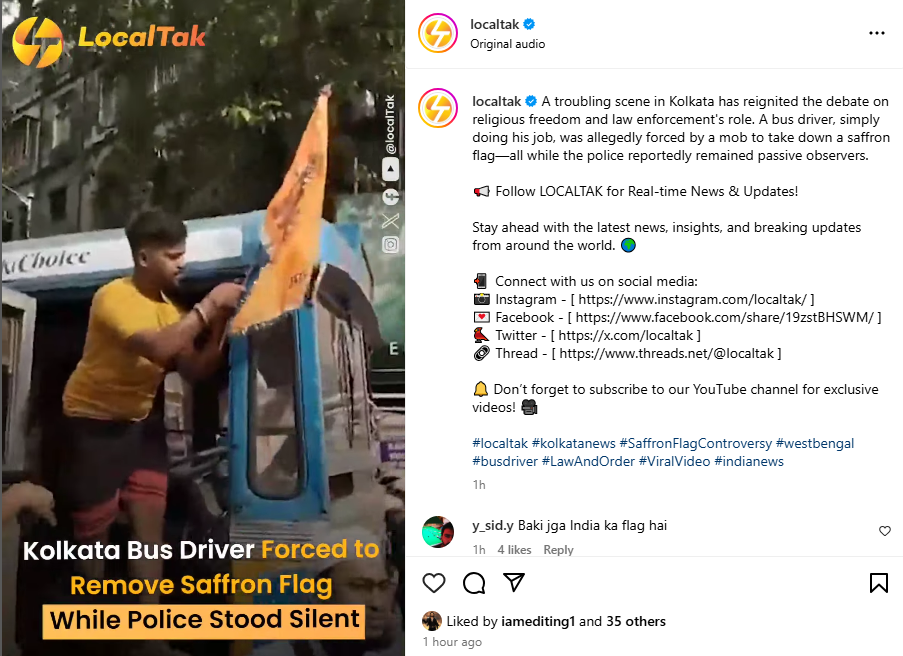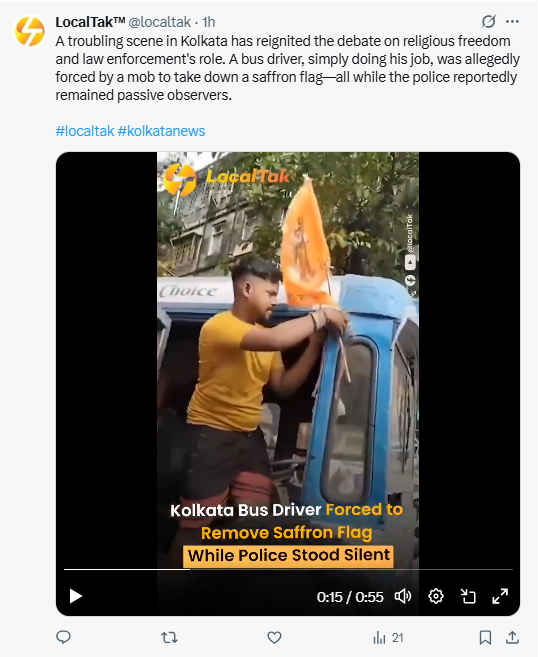A disturbing incident in Kolkata has stirred controversy over religious freedom and police inaction, after a bus driver was allegedly coerced by a mob to remove a saffron flag while officers looked on.
A troubling incident in Kolkata Bus Driver has reignited debate over religious freedom and the role of law enforcement in maintaining public order and constitutional rights.
The controversy centers around a bus driver who was allegedly forced by a mob to remove a saffron flag from his vehicle—an act that has sparked widespread outrage and concern.

According to eyewitness accounts and local reports, the incident occurred in a busy part of the city where tensions had Driver already been simmering over religious symbolism in public spaces. The bus, adorned with a saffron flag—often associated with Hindu religious and cultural identity—became the target of a group that demanded its removal. Despite protests from the driver, who insisted he had a right to display the flag, he was reportedly coerced into taking it down.
What has intensified the public response is the alleged passivity of police officers present at the scene. Videos circulating on social media appear to show law enforcement personnel standing by as the complied under pressure. No intervention was made to disperse the crowd or protect the individual’s rights, leading many to question whether the police failed in their duty to uphold the law impartially.
Critics argue that such incidents reflect a worrying trend of selective enforcement and fear of communal backlash. “If a citizen can’t express their religious identity peacefully, and the police won’t step in to protect them, it undermines the very foundation of secular democracy,” said a human rights advocate based in the city.
On the other side, some have defended the police, suggesting that intervention might have escalated the situation. “In such a volatile environment, restraint can sometimes be the safest course of action,” said a retired officer familiar with crowd control protocols.
The state government has yet to issue an official statement, but opposition leaders have called for an investigation into the conduct of the police and demanded assurances that such incidents will not be tolerated in the future.
As the video continues to circulate and voices grow louder on both sides, the incident has become more than just a moment of street-level conflict—it’s a flashpoint in the ongoing national conversation about religious tolerance, individual rights, and the responsibilities of those tasked with protecting them.














 Categories
Categories









